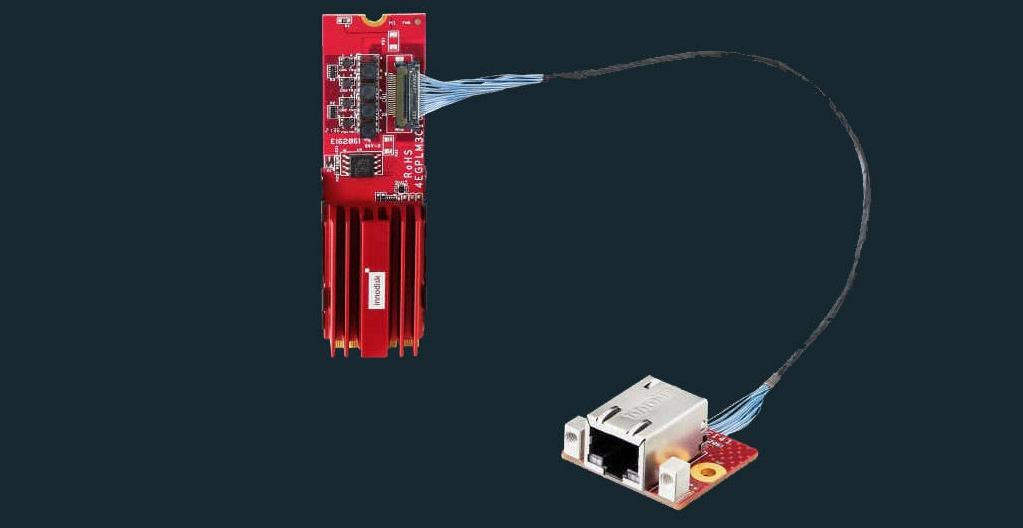This Tiny 10GbE NIC Slots Into an M.2 Port
The world's smallest discrete 10GbE adapter?
The M.2 form-factor was primarily designed for solid-state drives, but since it uses an industry-standard PCIe interface, an M.2 card can be used for other applications. Last year, ASRock introduced an M.2 graphics adapter, and this week Innodisk launched an M.2-2280 10GbE network card.
The Innodisk EGPL-T101 M.2-2280 10GbE adapter features a PCIe 3.0 x2 interface and is based on a Marvell AQtion controller supporting speeds up to 10 Gb/s over Cat6/Cat6A copper cables. In addition, the module consumes no more than 2.5W, so it can fit into tightly-packed environments that do not have proper ventilation without the risk of overheating.
Innodisk primarily positions its EGPL-T101 module as a solution for systems used for machine vision, high-resolution imaging, and gaming. However, it can also be used for various home theatre PCs (HTPCs) and high-performance storage systems to take advantage of fast network transfers.
As for compatibility, like other 10GbE adapters powered by an AQtion controller, the EGPL-T101 comes with drivers that work with Microsoft Windows 7 and later as well as Linux Kernel 3.10 and later.
Innodisk says that the EGPL-T101 module will be in mass production this month, so expect it to hit the market early next year. Unfortunately, we have no reference point for M.2-2280 10GbE network adapter pricing. But since Marvell's Aquantia AQtion-based PCIe 3.0 cards are pretty widespread and start at around $100 at Amazon, we expect Innodisk to charge a premium for the M.2 form-factor.
Get Tom's Hardware's best news and in-depth reviews, straight to your inbox.

Anton Shilov is a contributing writer at Tom’s Hardware. Over the past couple of decades, he has covered everything from CPUs and GPUs to supercomputers and from modern process technologies and latest fab tools to high-tech industry trends.
-
Krotow M.2 NVMe PCIe slot utilizing for another purposes than storage was only a matter of time. In some laptops it is already used to connect internal WiFi adapter.Reply
10 Gbps Ethernet seems make sense when user have fast enough uplink to benefit from such speed. Otherwise it will be waiting game for a week or two while another 8K resolution movie will download in the middle of woods.
